The Pantheon is one of Rome’s most impressive and influential buildings. It is a former Roman temple converted into a Catholic church in the 7th century. It is famous for its huge dome, the largest unreinforced concrete dome in the world. The Pantheon is also a burial place for several important Italian figures, such as the painter Raphael and the kings Victor Emmanuel II and Umberto I. Emperor Hadrian built the Pantheon between 118 and 128 AD on the site of an earlier temple commissioned by Marcus Agrippa in 27 BC. The original temple was destroyed by fire twice, and only the inscription on the front entrance remains from Agrippa’s building. The Pantheon’s design combines a classical Greek-style entrance with a circular Roman-style rotunda. The entrance has 16 granite columns topped by a triangular pediment, while the dome has a coffered ceiling with an opening (oculus) at the center. The Pantheon is open to the public every day from 09:00 am to 07:00 pm, except on some holidays. The admission fee is $5.50 (€5, £4.20), but it is free for children under 18 and residents of Rome. Visitors can also book a guided tour or an audio guide for an extra charge. The Pantheon is located in the historic center of Rome, near Piazza Navona and the Trevi Fountain. It is easily accessible by bus, metro, or taxi. The Pantheon is a must-see attraction for anyone who loves history, art, and architecture.
What is the Pantheon?
The Pantheon is a historic building located in Rome, Italy. The Pantheon was built in the year 126 CE (Common Era). The Roman Emperor Hadrian commissioned the structure. The Pantheon is a circular building with a portico at the entrance supported by large granite columns. The structure has a dome that is considered one of the most significant architectural achievements of the Roman Empire. The height of the dome measures 142 feet (43 meters). The Pantheon’s diameter is 142 feet (43 meters), making it one of the largest domes in the world. The interior of the Pantheon is equally impressive, with a vast open space beneath the dome. The dome has an oculus, a circular opening at the top, which allows natural light to enter the building. Today, the Pantheon serves as a popular tourist attraction and is also used as a church. Visitors can explore the interior of the building and admire its remarkable architecture and historical significance. The Pantheon is known for its well-preserved ancient design and remains an iconic symbol of Roman engineering and innovation.
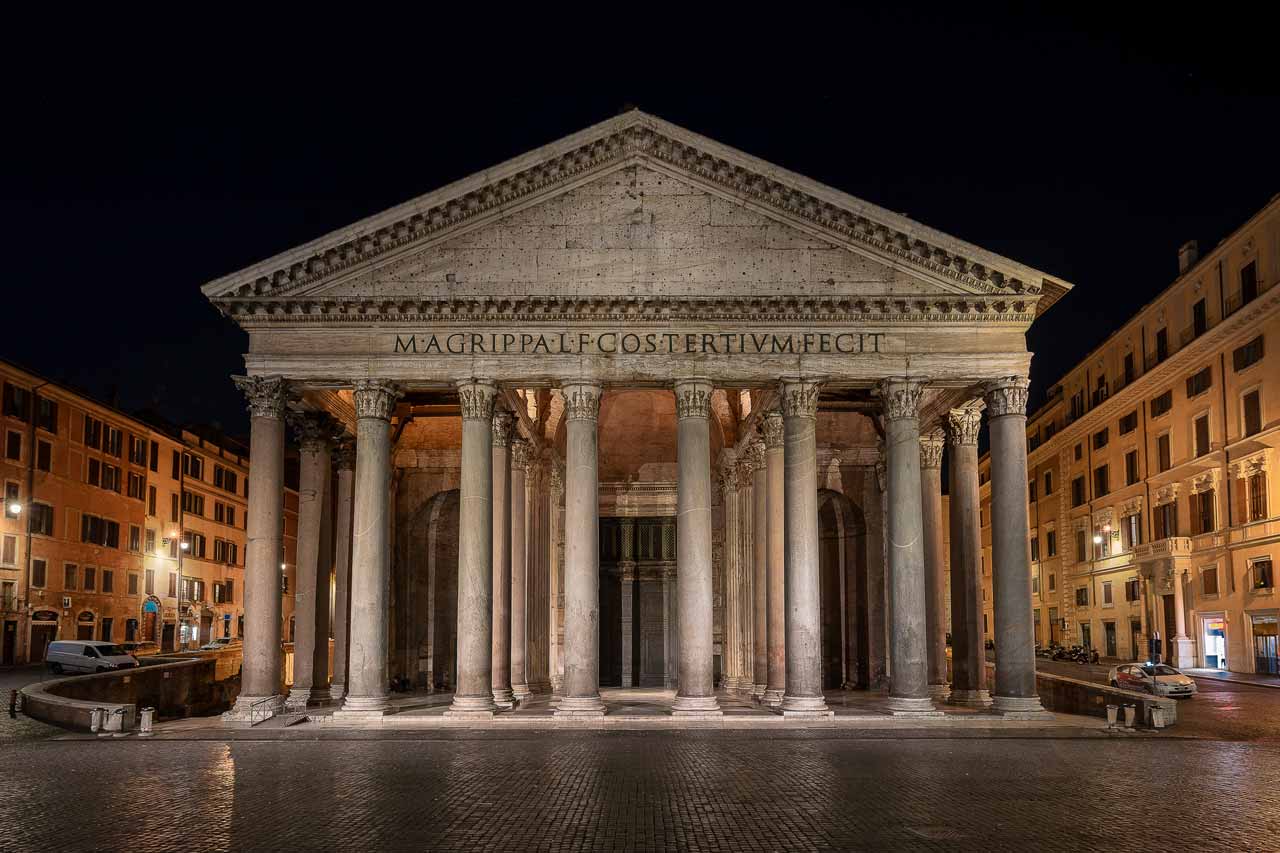
What architectural style is most prominent in the Pantheon?
The Pantheon is predominantly characterized by the architectural style known as Roman Imperial Architecture. The style emerged during the reign of the Roman Empire and is characterized by its grandeur, use of arches and vaults, and emphasis on monumental structures. The Pantheon showcases the key elements of Roman Imperial Architecture, which were influenced by Greek and Etruscan architectural traditions. The most distinctive feature of the Pantheon is its massive dome, a hallmark of Roman engineering and innovation. The dome is constructed using coffering, where the ceiling is divided into sunken panels. The technique reduces the dome’s weight and adds a visually striking effect. The Pantheon’s architectural style reflects the grandeur and power of the Roman Empire during its height. The emphasis on monumental structures and the innovative use of architectural elements, such as the dome, showcases the engineering prowess of the Romans. The Pantheon’s architectural style has had a lasting influence on subsequent architectural movements and continues to be admired for its harmonious proportions and enduring beauty.
What structural engineering principles are employed in the construction of the Pantheon?
There are 4 major structural engineering principles that are employed in the construction of the Pantheon. Firstly, the Pantheon’s dome utilizes the principle of the arch. Arches are curved structures that distribute the weight of the building evenly, allowing for the support of heavy loads. The Pantheon’s dome is constructed using a series of arches, known as a dome-within-a-dome, which provides stability and structural strength. Secondly, the Pantheon incorporates the technique of coffering in its dome’s construction. Coffering involves creating a series of sunken panels on the dome’s interior surface. The method not only reduces the dome’s weight but also adds visual interest and architectural beauty, plus, the coffering helps to evenly distribute the forces acting on the dome, enhancing its structural stability. Thirdly, the Pantheon features a central oculus, a circular opening at the top of the dome. The design element serves multiple purposes, such as allowing natural light to enter the building, creating a unique visual effect, and illuminating the interior space. The oculus serves as a ventilation system, allowing hot air to escape and maintaining a comfortable environment within the structure. Lastly, the Pantheon’s use of concrete, a durable and versatile building material, was a key engineering principle. The Romans developed a special type of concrete called pozzolana, which consisted of a mixture of lime, volcanic ash, and other aggregates. The concrete formulation provided strength, stability, and longevity to the Pantheon’s structure.
Who designed the Pantheon?
The Pantheon was designed by the Roman architect Apollodorus of Damascus. He was a well-known architect and engineer during the reign of the Roman Emperor Hadrian. Apollodorus of Damascus was known for his expertise in designing monumental structures and innovative architectural solutions. Emperor Hadrian commissioned Apollodorus of Damascus to create the Pantheon as a temple dedicated to all the gods of ancient Rome. He employed his architectural knowledge to design a structure that showcased the grandeur and power of the Roman Empire. Apollodorus of Damascus successfully combined elements from Greek and Roman architectural traditions to create a unique and iconic building. The design of the Pantheon, with its massive dome, monumental entrance, and intricate architectural details, stands as a testament to the skill and vision of Apollodorus of Damascus. His architectural contributions played a significant role in shaping the landscape of ancient Rome and continue to inspire admiration and awe to this day.
What are the historical design influences visible in the Pantheon?
There are four major historical design influences visible in the Pantheon. Firstly, the Pantheon incorporates elements of Greek architecture, particularly in its entrance. The entrance consists of a row of Corinthian columns, a characteristic feature of ancient Greek temples. The influence of Greek architecture reflects the Romans’ admiration and adoption of Greek artistic and architectural principles, showcasing their appreciation for the cultural achievements of their predecessors. Secondly, using arches and vaults to construct the Pantheon demonstrates the influence of Etruscan engineering. The Etruscans, an ancient civilization in Italy, were skilled in constructing arches and vaults. The Romans adopted and refined these techniques, incorporating them into their architecture. The presence of arches and vaults in the Pantheon’s design showcases the Romans’ mastery of these structural elements, allowing for the creation of large, open spaces and contributing to the building’s overall stability and grandeur. Thirdly, the Pantheon’s dome design draws inspiration from Roman architectural innovations. The Romans developed the technique of constructing large domes using a series of arches, resulting in a structure that could support the weight of the building while creating an expansive interior space. The dome of the Pantheon exemplifies Roman architectural ingenuity, showcasing their ability to engineer monumental structures that pushed the boundaries of what was thought possible at the time. Lastly, the decorative elements within the Pantheon bear influences from Greek and Roman art. The interior of the Pantheon features intricate designs, including statues and reliefs, depicting various mythological figures and scenes. These artistic embellishments reflect the fusion of Greek and Roman artistic traditions, creating a visual narrative that celebrates the pantheon of gods worshipped by the Romans.
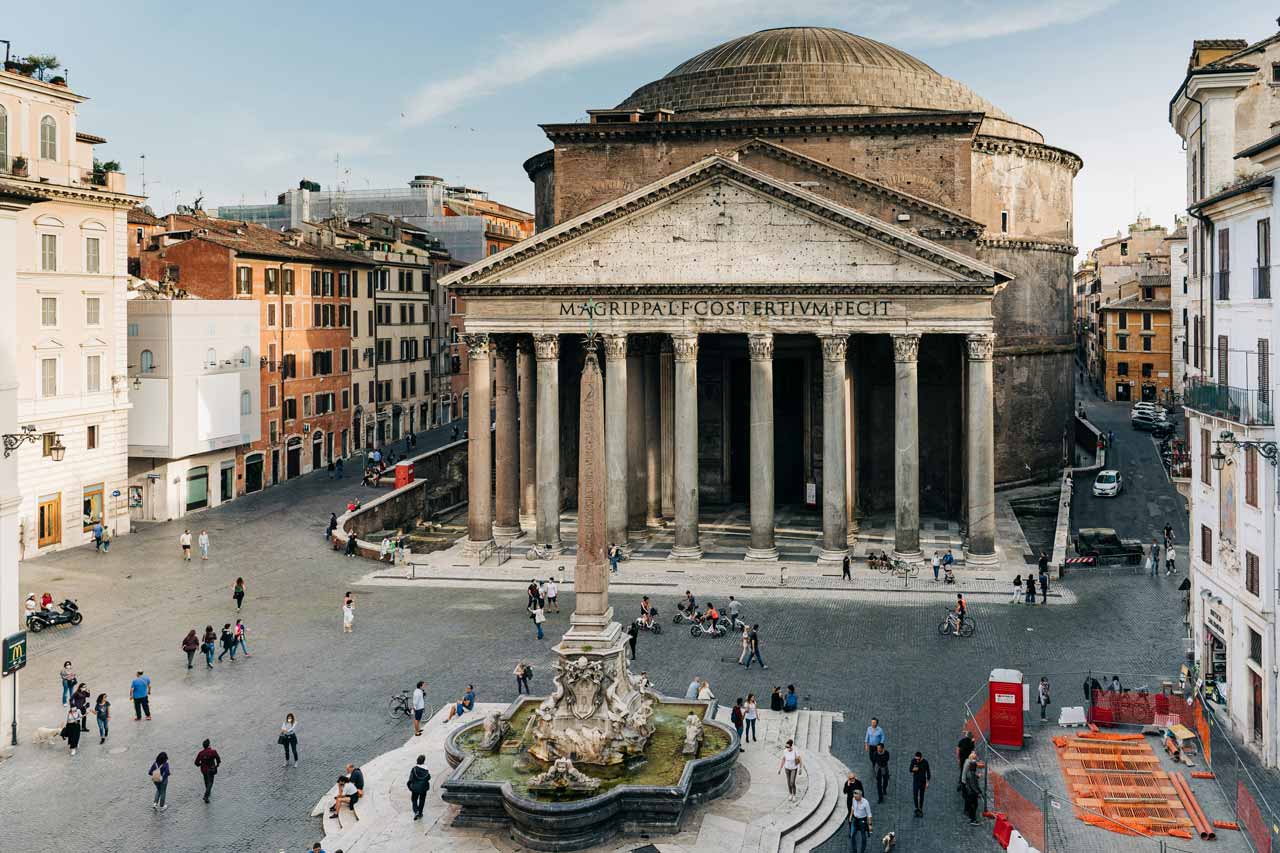
How has the Pantheon influenced the design of other buildings in Italy?
The Pantheon influenced the design of other buildings in Italy in 4 ways. Firstly, the Pantheon’s dome has been a model and inspiration for numerous architectural endeavors in Italy. The concept of a large, self-supporting dome became a hallmark of Italian Renaissance architecture. Prominent examples include Brunelleschi’s dome in Florence’s Cathedral and Michelangelo’s dome in St. Peter’s Basilica in Vatican City. These structures demonstrate the influence of the Pantheon’s dome, both in terms of its grandeur and its engineering ingenuity. Secondly, the Pantheon’s use of arches and vaults has also influenced the design of other Italian buildings. The technique of constructing arches and vaults became a fundamental element in Italian architectural traditions. It can be observed in structures like the Colosseum in Rome, which showcases the Romans’ mastery of these architectural features. Churches and cathedrals in Italy, such as the Basilica di San Francesco in Assisi and the Cathedral of Siena, incorporate arches and vaulted ceilings, mirroring the architectural language established by the Pantheon. Thirdly, the Pantheon’s impact extends beyond its structural elements to its overall design aesthetic. The Pantheon’s harmonious proportions and balanced composition have influenced classical architectural principles, which remain revered in Italy. Throughout history, architects have sought to emulate the Pantheon’s sense of balance and visual elegance. Such influence can be seen in buildings like the Palladian villas in Veneto, which drew inspiration from the Pantheon’s harmonious design principles. Lastly, the decorative elements found within the Pantheon, such as the intricate reliefs and statues, have influenced the ornamental traditions of Italian architecture. The incorporation of sculptural details and artistic embellishments can be seen in various Italian buildings, particularly churches and palaces. The facade of the Basilica di Santa Maria Novella in Florence features intricate bas-reliefs, reflecting the influence of the Pantheon’s decorative elements.
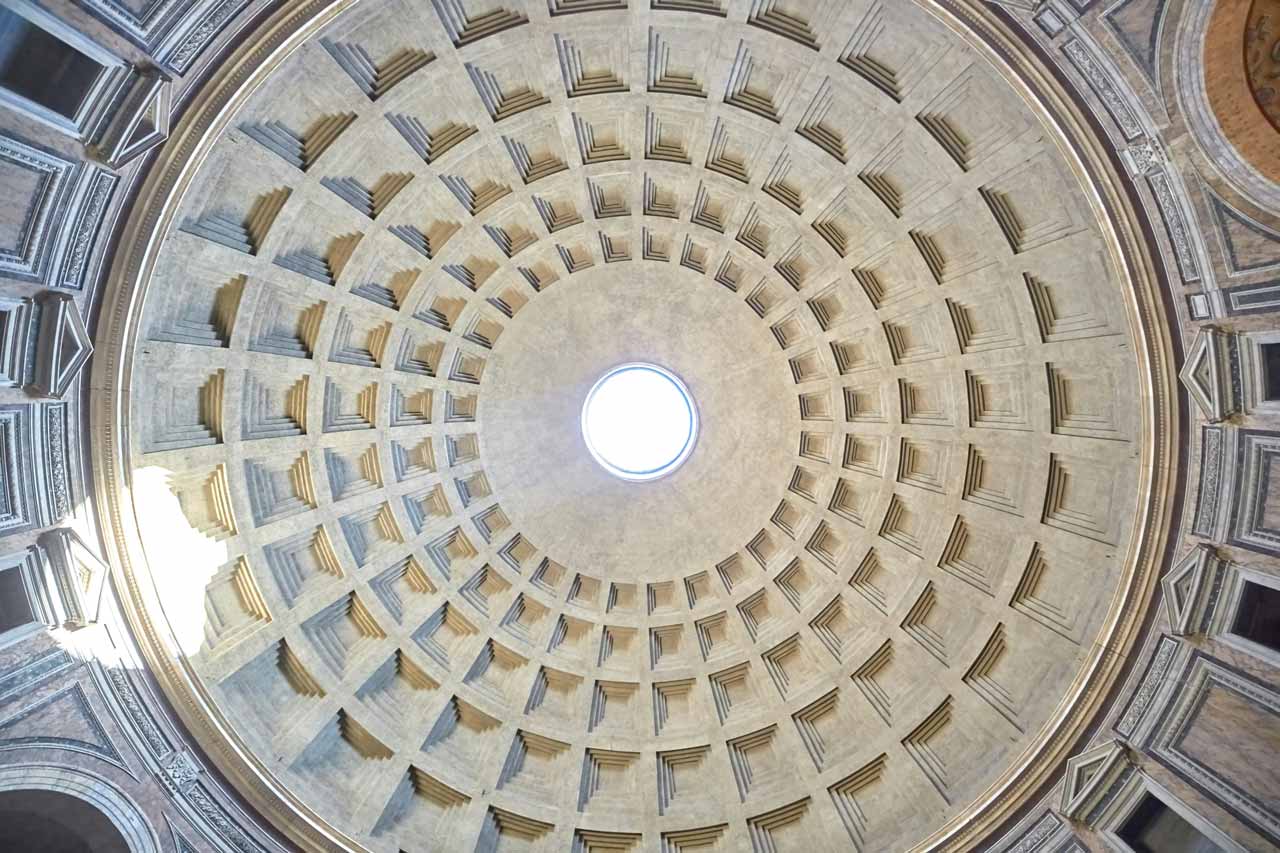
What purpose does the Pantheon serve, and how does the design help?
The Pantheon serves as a temple dedicated to all the gods of ancient Rome. Its design helps fulfill this purpose by creating an awe-inspiring space conducive to religious rituals and gatherings. Firstly, the dome’s vast interior space gives a sense of grandeur and reverence. The dome’s design and construction techniques, including arches and coffers, distribute the structure’s weight and create a visually striking and acoustically balanced interior. The design element helps elevate the Pantheon’s spiritual experience, allowing visitors to feel a sense of awe and connection to the divine. Secondly, the oculus, a large circular opening at the top of the dome, serves practical and symbolic purposes. It allows natural light to enter the interior, creating a dynamic interplay between light and shadow. The effect enhances the ethereal atmosphere within the Pantheon and adds to its spiritual ambiance. Symbolically, the oculus represents a connection to the divine realm and an acknowledgment of the gods’ omnipresence. Lastly, the portico of the Pantheon, with its row of Corinthian columns and impressive entrance, helps to establish a sense of importance and significance. The entrance transitions from the outside world to the sacred space within, emphasizing the transition from the mundane to the divine. The design elements of the entrance, such as the carefully proportioned columns and pediment, contribute to the overall aesthetic appeal of the Pantheon and create a lasting impression on visitors.
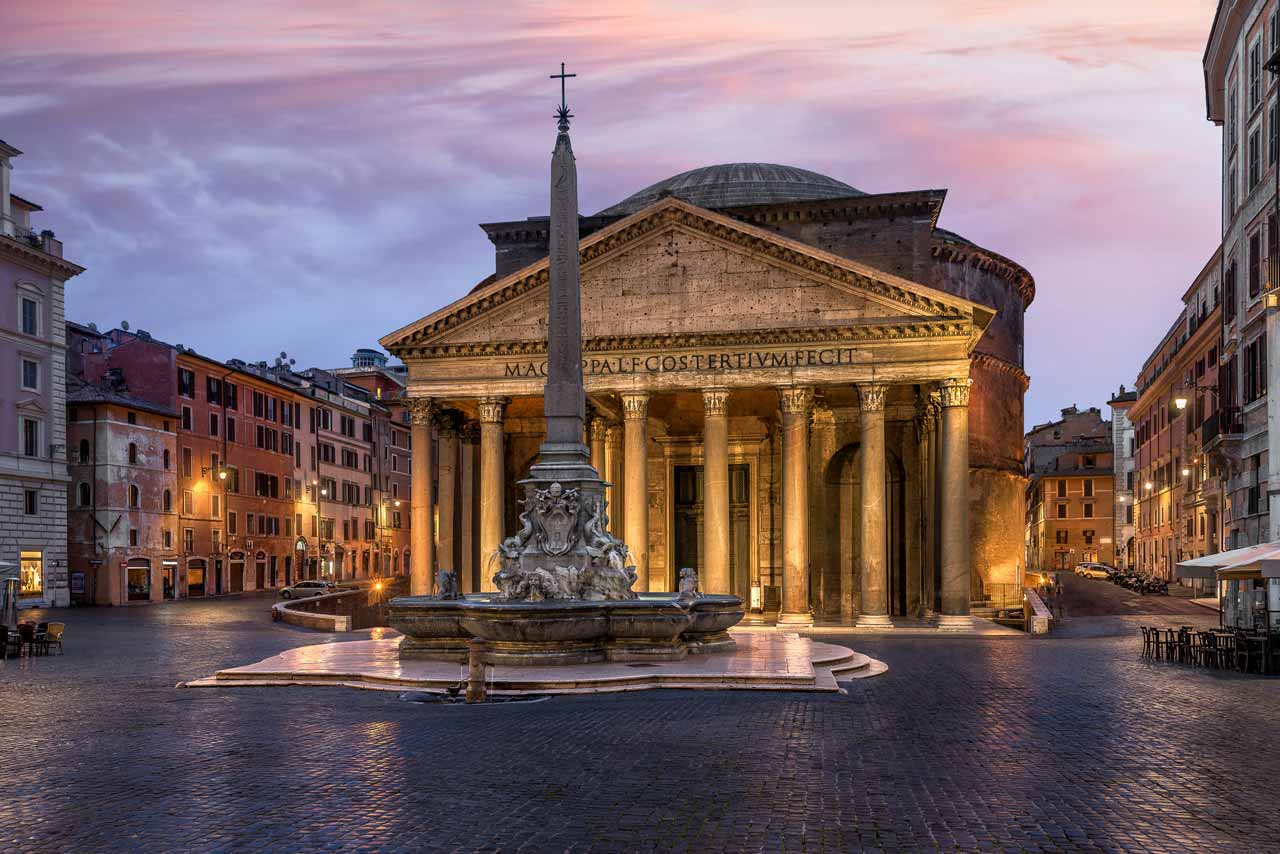
How is the Pantheon maintained?
The Pantheon is maintained through regular upkeep and restoration efforts. It is managed by a dedicated team of conservators and maintenance personnel. The structure undergoes routine inspections to identify any deterioration or damage, ensuring its structural integrity. Necessary repairs use traditional and modern techniques to preserve its historical significance. To prevent environmental factors from adversely affecting the Pantheon, measures are taken to control humidity and temperature levels within the building. Climate control systems are in place to maintain stable conditions, protecting the interior from excessive moisture or extreme temperature fluctuations. Regular cleaning and conservation treatments are also performed to safeguard the Pantheon’s surfaces and decorative elements.
How does the Pantheon reflect cultural and contextual relevance in its design?
The Pantheon reflects cultural and contextual relevance in its design in 4 ways. Firstly, the Pantheon’s architectural style reflects the cultural assimilation during the Roman Empire. The incorporation of Greek architectural influences, such as the Corinthian columns in the entrance, demonstrates the Romans’ appreciation for the cultural achievements of the Greeks. The fusion of architectural traditions showcases the inclusive nature of the Roman Empire, where diverse cultural influences were embraced and incorporated into their own artistic expressions. Secondly, the design of the Pantheon showcases the architectural innovations of ancient Rome. The use of arches, vaults, and the monumental dome are testament to the Romans’ engineering prowess. The Pantheon’s dome, in particular, exemplifies the Romans’ ability to create large, self-supporting structures using advanced construction techniques. The architectural achievement reflects the cultural and technological advancements of the Roman Empire and its desire to push the boundaries of what was considered possible in architecture. Thirdly, the decorative elements within the Pantheon’s design reflect ancient Rome’s religious and mythological beliefs. The intricate reliefs and statues depict various mythological figures and scenes, celebrating the pantheon of gods worshipped by the Romans. These decorative elements add artistic beauty to the Pantheon and represent the religious and cultural beliefs central to Roman society. Lastly, the Pantheon’s design considers its time’s practical needs and environmental conditions. The oculus at the top of the dome allows natural light to enter the interior, creating a dynamic interplay between light and shadow. The design feature not only adds to the aesthetic appeal of the Pantheon but also serves a functional purpose by providing illumination to the interior space. The size and layout of the interior accommodate large gatherings and religious ceremonies, reflecting the cultural and social practices of ancient Rome.
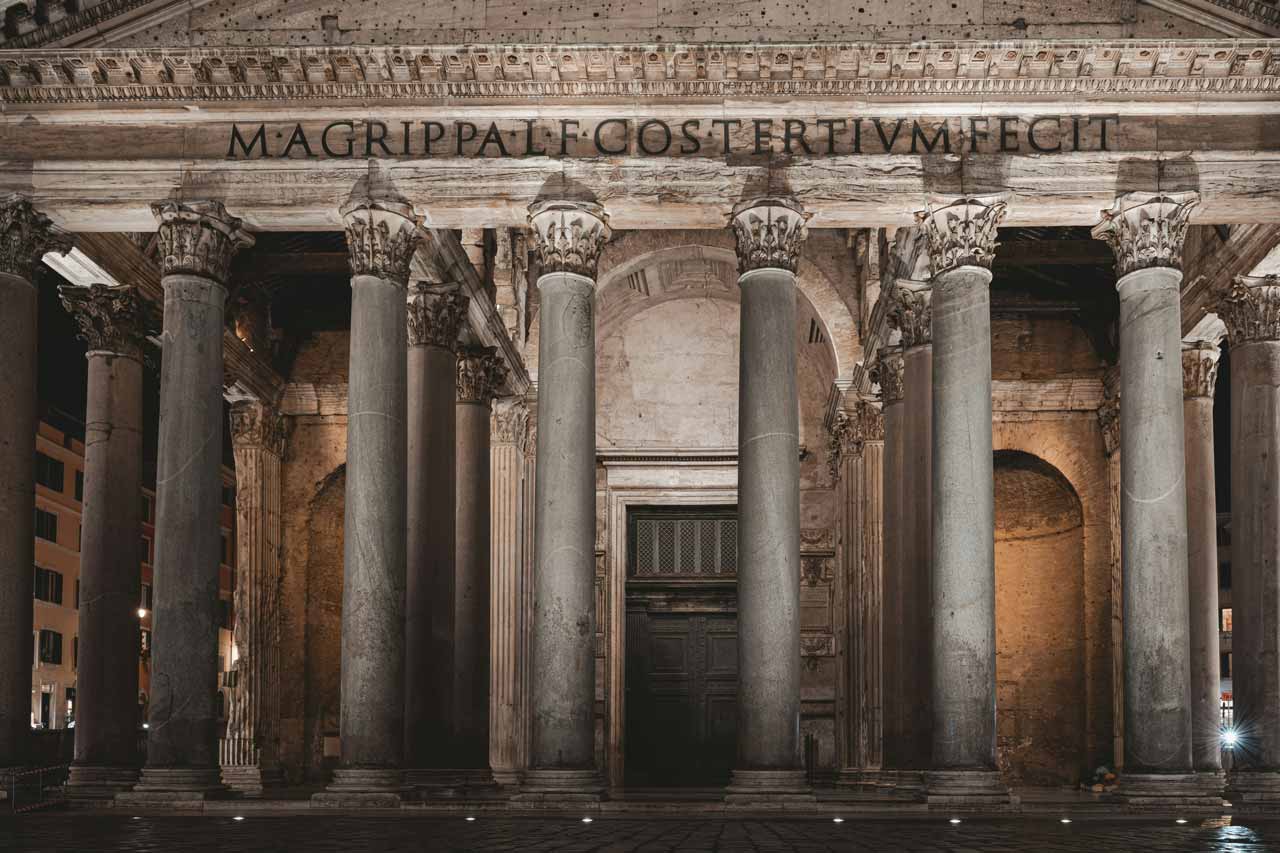
What architectural trend or movement does the Pantheon represent?
The Pantheon represents the architectural trend of Roman classical architecture. It showcases this style’s distinctive features and principles, which were prevalent during the Roman Empire. The Pantheon’s design embodies the essence of Roman classical architecture through its grand scale, symmetrical layout, and use of traditional building materials such as concrete and stone. Its iconic dome, with its oculus at the top, is a remarkable engineering achievement that exemplifies the Romans’ mastery of structural innovation. The temple’s emphasis on proportion and balance, as well as its integration of classical orders such as the Corinthian columns, further exemplify the characteristics of Roman classical architecture. The Pantheon’s architectural design reflects the Romans’ reverence for the gods and their desire to create monumental structures that demonstrated their power and authority. It served as a place of worship and a symbol of Roman imperial grandeur. The enduring legacy of the Pantheon’s architectural style can be seen in numerous buildings influenced by its design throughout history.
What are the challenges faced during the restoration of the Pantheon?
There are four major challenges faced during the restoration of the Pantheon. Firstly, one of the challenges faced during the restoration of the Pantheon is preserving its original materials and structural integrity. The Pantheon has stood for over two thousand years, and its materials have been exposed to natural elements and the passage of time. Restorers must carefully assess and address decay, erosion, and damage caused by pollution, moisture, and seismic activity. Preserving the original materials while ensuring their stability and longevity requires skilled craftsmen and conservation experts. Secondly, the restoration of the Pantheon must strike a delicate balance between preserving its historical authenticity and making it accessible to visitors. The challenge involves maintaining the original architectural features and decorative elements while implementing necessary measures for visitor safety and comfort. The installation of modern lighting, climate control systems, and accessibility ramps must be carefully integrated without compromising the integrity of the original design. Thirdly, the Pantheon’s sheer size and scale pose logistical challenges during restoration. Its massive dome and extensive interior require specialized equipment and scaffolding to reach and repair high areas. The process of removing and replacing damaged or deteriorated materials, such as marble and stonework, can be complex and time-consuming. Restorers must ensure the restoration work is carried out meticulously to maintain the Pantheon’s structural stability and aesthetic value. Lastly, the restoration of the Pantheon faces the challenge of funding and resource allocation. Restoration projects of this magnitude require substantial financial resources and the coordination of skilled professionals, engineers, and artisans. Securing funding from governmental bodies, private organizations, and public donations is crucial to ensure the successful completion of the restoration process and the long-term preservation of this cultural treasure.
How does the Pantheon comply with contemporary safety and accessibility standards?
The Pantheon complies with contemporary safety and accessibility standards in 4 ways. Firstly, installing accessibility ramps and elevators has improved the Pantheon’s accessibility for individuals with mobility challenges. Ramps have been strategically placed to provide barrier-free access to the entrance and other areas of the monument. Elevators have been installed to enable visitors to access elevated sections, such as the dome, without encountering architectural barriers. These modifications allow individuals with disabilities or limited mobility to navigate the Pantheon more easily and participate in its cultural experience. Secondly, contemporary safety standards have been implemented to ensure visitors’ well-being. Fire suppression systems, including smoke detectors and fire extinguishers, have been strategically placed throughout the monument. These measures help mitigate the fire risk and ensure a safe environment for visitors. Emergency exits and evacuation procedures have been established to facilitate a prompt and orderly emergency response. Thirdly, the Pantheon’s interior lighting has been upgraded to enhance visibility and safety. Modern lighting systems have been installed to adequately illuminate the interior spaces, allowing visitors to navigate the monument easily and reducing the risk of accidents or trips. The lighting design also highlights the architectural features and decorative elements, enhancing the overall visitor experience while maintaining a safe environment. Lastly, informational signage and guidance have been implemented to assist visitors and ensure their safety. Clear signage indicating emergency exits, safety instructions, and directional guidance have been installed throughout the Pantheon. It helps visitors navigate the monument effectively and understand safety protocols. Informative signage provides historical and cultural context, enriching the visitor experience and fostering a deeper understanding of the Pantheon’s significance.
Are there any specific tours for architects or architecture enthusiasts to visit the Pantheon?
Yes, there are some specific tours for architects or architecture enthusiasts to visit the Pantheon. The Pantheon Small-Group Tour is led by a certified archaeologist who will explain the Pantheon’s history, symbolism, and architectural details. Architects or architecture enthusiasts will also see nearby landmarks, such as Bernini’s Elephant and Obelisk and the Basilica of Neptune. The tour lasts one hour and costs $27 (€24.57, £23.49) per person, while the Influential Architecture of the Pantheon in Rome is a self-guided tour that architects or architecture enthusiasts can do at their own pace. They must download an audio guide to provide information about the Pantheon’s geometry, building methods, and influence on Western architecture. Architects or architecture enthusiasts will also learn about the history and legends of the Pantheon and its surroundings. The audio guide costs $6 (€5.46, £5.22)) per person.
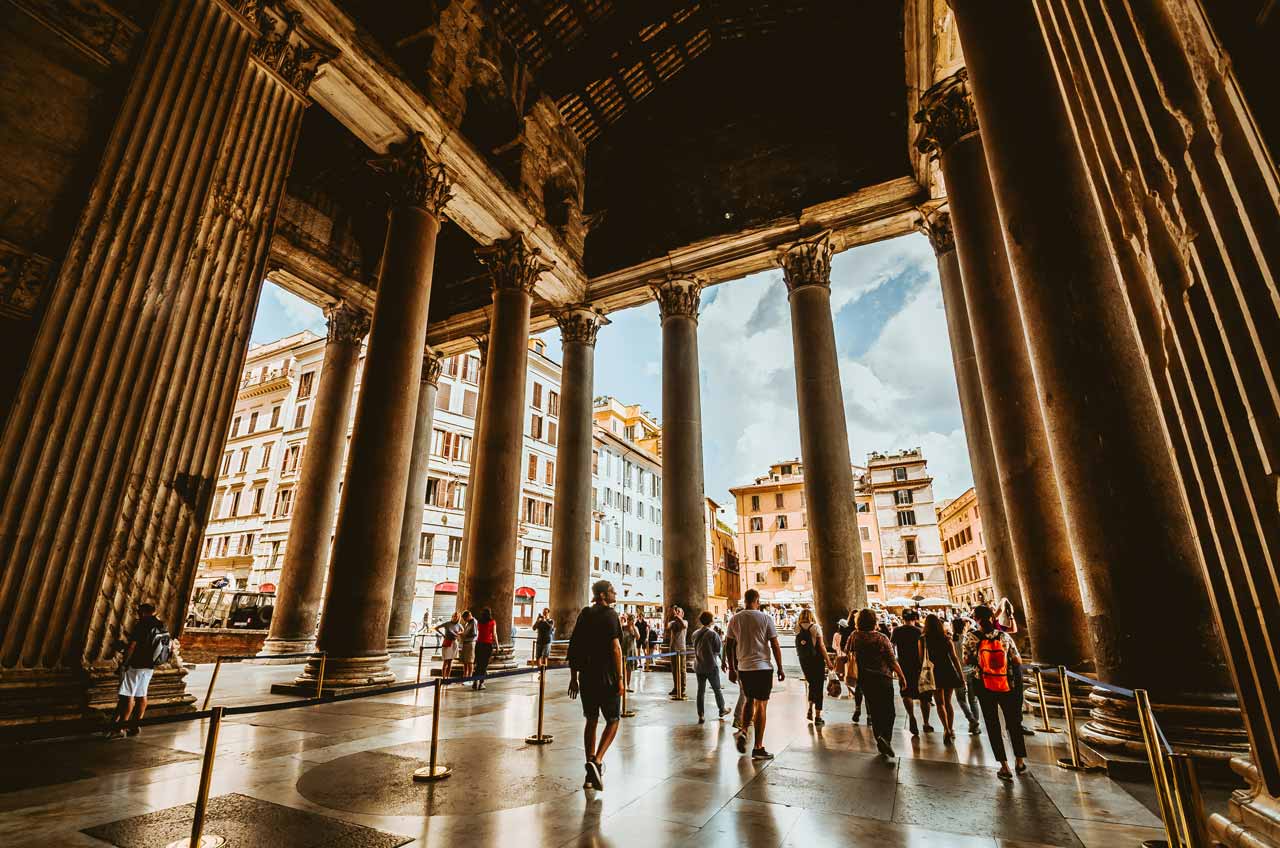
What lessons can architects learn from the design and construction of the Pantheon?
There are four lessons that architects can learn from the design and construction of the Pantheon. Firstly, architects can learn from the Pantheon’s innovative structural design. The monumental dome, supported by a series of arches and a thick drum, showcases the Romans’ mastery of engineering and construction techniques. Architects can draw inspiration from this structural ingenuity and explore ways to push the boundaries of what is considered possible in their own designs. Secondly, the Pantheon’s fusion of architectural styles teaches architects the value of cultural integration. The incorporation of Greek influences, such as the Corinthian columns, demonstrates the Romans’ appreciation for the cultural achievements of others. Architects can learn from this example by embracing diversity and cross-cultural influences in their designs. Through the incorporation of elements from different architectural traditions, architects can create spaces that reflect the richness of cultural exchange and celebrate the diversity of human heritage. Thirdly, architects can learn from the Pantheon’s harmonious relationship with its context. The monument’s design considers the surrounding environment, embracing natural light through the oculus and creating a dynamic interplay between light and shadow. Through the consideration of factors such as site orientation, climate, and the surrounding landscape, architects can create buildings that respond harmoniously to their surroundings, enhancing the overall user experience. Lastly, architects can learn from the Pantheon’s enduring legacy and cultural significance. Despite its age, the Pantheon continues to inspire and captivate visitors worldwide. Through architectural excellence and considering the long-term implications of their designs, architects can create buildings that stand as enduring symbols of cultural and architectural significance.
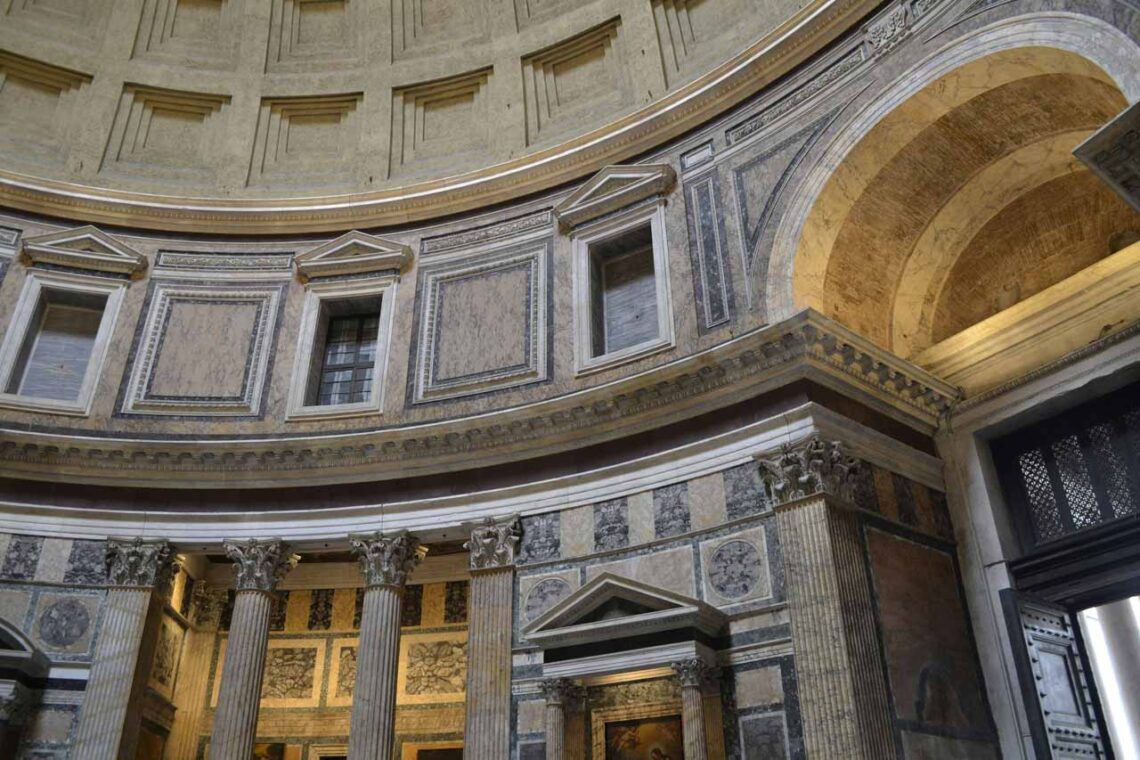
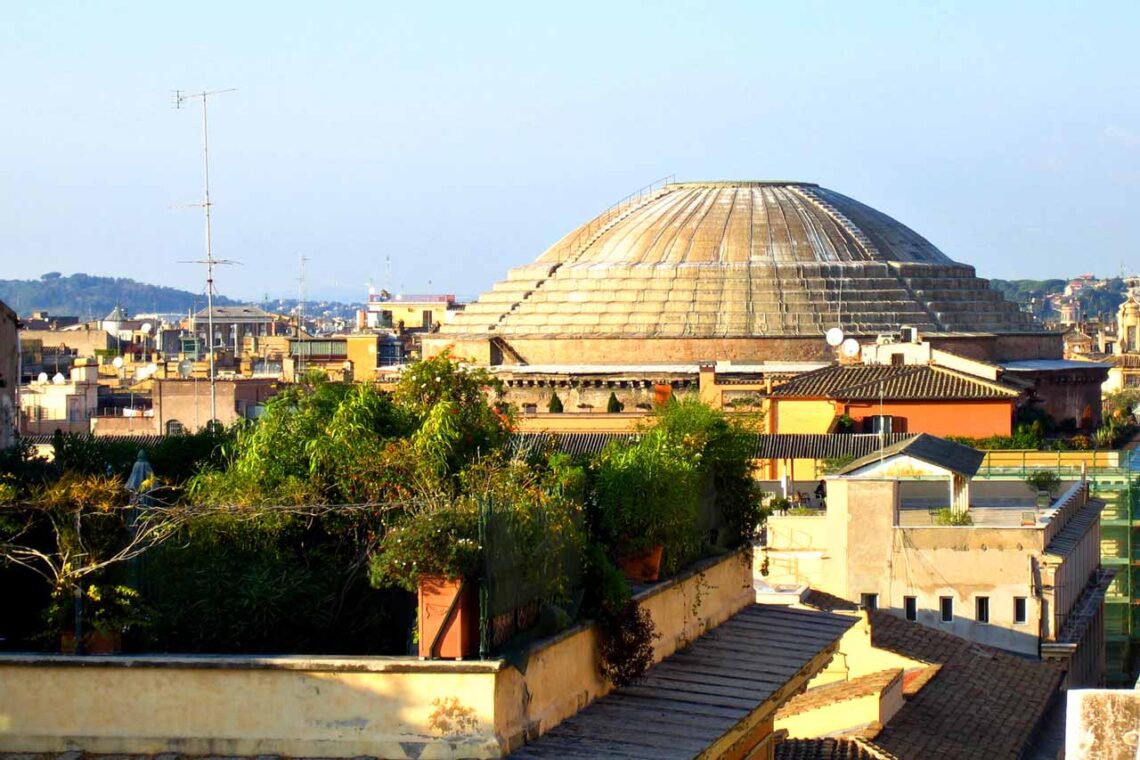
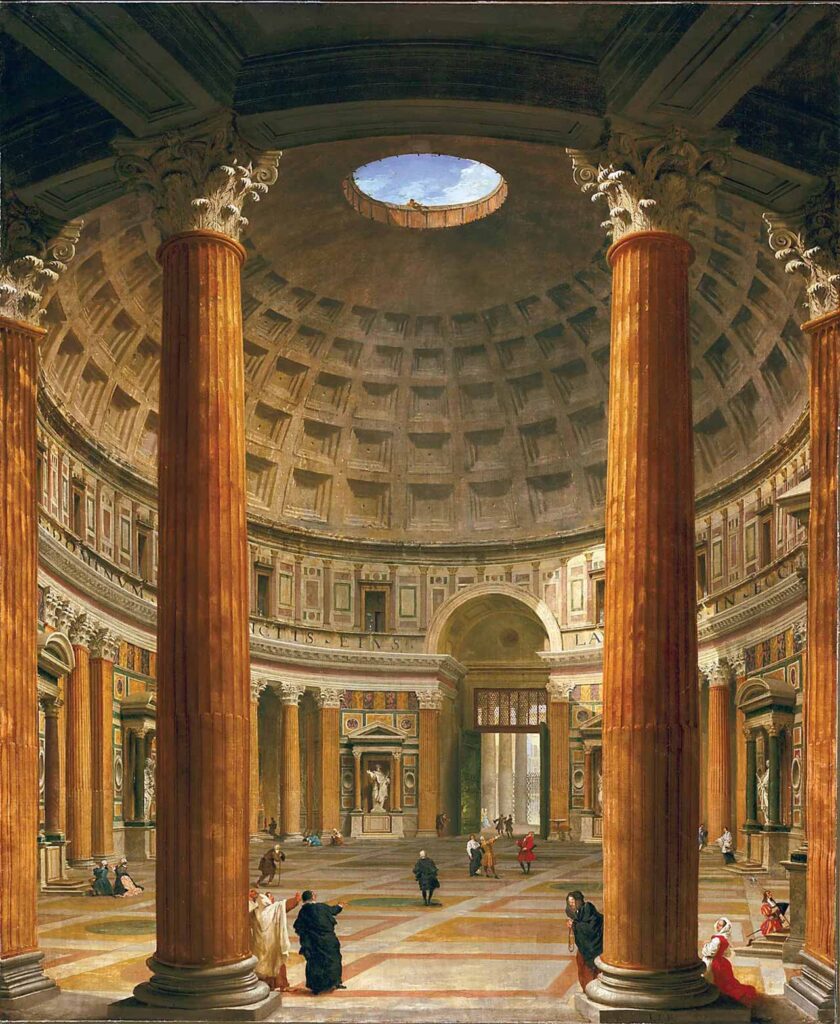
What are the best architectural landmarks to visit as an architect?
Listed below are the best architectural landmarks to visit as an architect:
- Sagrada Familia: The Sagrada Familia is an iconic basilica located in Barcelona, Spain. Designed by popular architect Antoni Gaudí, it is known for its unique and intricate architectural style that combines Gothic and Art Nouveau influences. The basilica has been under construction since 1882 and is still ongoing, making it a fascinating example of long-term architectural vision and dedication. Visitors can admire the stunning facades, soaring towers, and intricate details that make the Sagrada Familia a must-visit landmark for architects and enthusiasts alike.
- Taj Mahal: The Taj Mahal is a UNESCO World Heritage site in Agra, India. Built in the 17th century by Emperor Shah Jahan as a mausoleum for his beloved wife, it is considered one of the most beautiful examples of Mughal architecture. The Taj Mahal features intricate marble inlay work, symmetrical design elements, and a stunning white marble exterior. Its harmonious proportions and elegant details make it a masterpiece of architectural craftsmanship, attracting millions of visitors annually.
- Sydney Opera House: The Sydney Opera House is an iconic performing arts center in Sydney, Australia. Designed by Danish architect Jørn Utzon, it is known for its distinctive sail-like roof structure. The complex houses multiple performance venues and symbolizes modern expressionist architecture. Its innovative design and engineering challenges make it a significant landmark in architectural history. Visitors can take guided tours to explore the interior spaces and learn about the architectural concepts behind this world-famous structure.
- Guggenheim Museum Bilbao: The Guggenheim Museum Bilbao is a contemporary art museum in Bilbao, Spain. Designed by architect Frank Gehry, it is recognized for its striking, curvilinear form and titanium-clad exterior. The museum’s unconventional design pushes the boundaries of traditional architecture, creating a visually captivating and highly acclaimed landmark. Inside, visitors can experience a diverse collection of modern and contemporary art. The Guggenheim Museum Bilbao has revitalized the city, symbolizing urban regeneration through architecture.
- Fallingwater: Fallingwater is a residential house located in Mill Run, Pennsylvania. Designed by architect Frank Lloyd Wright, it is an iconic example of organic architecture that integrates seamlessly with its natural surroundings. The house is built over a waterfall and features cantilevered balconies and open spaces that blur the boundaries between indoors and outdoors. Fallingwater showcases Wright’s principles of harmony between architecture and nature, making it a significant landmark for architects interested in sustainable design.
- St. Peter’s Basilica: St. Peter’s Basilica is a major basilica in Vatican City, Rome. Designed by known architects, including Michelangelo and Gian Lorenzo Bernini, it is the largest church in the world and a masterpiece of Renaissance and Baroque architecture. The basilica’s grandeur is evident in its vast dome, intricate mosaics, and numerous works of art. Architects can appreciate the meticulous detailing and craftsmanship that went into creating this architectural marvel. Visitors can explore the interior, including the famous St. Peter’s Square, and marvel at its architectural and artistic splendor.
- The Louvre: The Louvre is a world-known art museum in Paris, France. Originally a medieval fortress, it was transformed into a grand palace and later became a museum. The Louvre is celebrated for its iconic glass pyramid entrance, designed by architect I.M. Pei. The museum houses an extensive collection of art and historical artifacts, including famous works such as the Mona Lisa. Architects can appreciate the museum’s architectural evolution, from its historic roots to the modern additions that have transformed it into a cultural landmark.
- Burj Khalifa: The Burj Khalifa is a skyscraper in Dubai, United Arab Emirates. Designed by the architectural firm Skidmore, Owings & Merrill, it is the tallest building in the world, standing at 2,717 feet (828 meters). The Burj Khalifa’s sleek and futuristic design features a stepped silhouette and a reflective glass facade. Its engineering marvels, such as the advanced structural systems and high-speed elevators, make it an impressive landmark for architects interested in tall building design. Visitors can enjoy panoramic views of Dubai from the observation decks on the upper floors.
- The Parthenon: The Parthenon is an ancient temple atop the Acropolis hill in Athens, Greece. Built in the 5th century BCE, it symbolizes classical Greek architecture and is one of the most influential buildings in Western history. The Parthenon showcases the Doric order with its iconic columns and pediments adorned with marble sculptures. Its harmonious proportions and refined architectural details demonstrate the principles of balance and symmetry. Architects can study the Parthenon’s design to understand the foundations of classical architecture and its enduring impact on architectural aesthetics.
- The Great Wall of China: The Great Wall of China is an ancient fortification that stretches across northern China. It is an architectural marvel and a UNESCO World Heritage site built over centuries. The wall showcases various construction techniques, including brick, stone, and rammed earth. Its strategic design incorporates watchtowers, battlements, and defensive features. The Great Wall’s vast scale and historical significance make it a remarkable landmark for architects interested in the intersection of architecture and military engineering. Visitors can explore different sections of the wall and admire the panoramic views of the surrounding landscapes.


